- Home
- H. P. Lovecraft
The Complete H. P. Lovecraft Reader (2nd Edition) Page 8
The Complete H. P. Lovecraft Reader (2nd Edition) Read online
Page 8
This earlier experience had come in 1908, seventeen years before, when the American Archaeological Society held its annual meeting in St. Louis. Professor Angell, as befitted one of his authority and attainments, had had a prominent part in all the deliberations; and was one of the first to be approached by the several outsiders who took advantage of the convocation to offer questions for correct answering and problems for expert solution.
The chief of these outsiders, and in a short time the focus of interest for the entire meeting, was a commonplace-looking middle-aged man who had travelled all the way from New Orleans for certain special information unobtainable from any local source. His name was John Raymond Legrasse, and he was by profession an Inspector of Police. With him he bore the subject of his visit, a grotesque, repulsive, and apparently very ancient stone statuette whose origin he was at a loss to determine. It must not be fancied that Inspector Legrasse had the least interest in archaeology. On the contrary, his wish for enlightenment was prompted by purely professional considerations. The statuette, idol, fetish, or whatever it was, had been captured some months before in the wooded swamps south of New Orleans during a raid on a supposed voodoo meeting; and so singular and hideous were the rites connected with it, that the police could not but realise that they had stumbled on a dark cult totally unknown to them, and infinitely more diabolic than even the blackest of the African voodoo circles. Of its origin, apart from the erratic and unbelievable tales extorted from the captured members, absolutely nothing was to be discovered; hence the anxiety of the police for any antiquarian lore which might help them to place the frightful symbol, and through it track down the cult to its fountain-head.
Inspector Legrasse was scarcely prepared for the sensation which his offering created. One sight of the thing had been enough to throw the assembled men of science into a state of tense excitement, and they lost no time in crowding around him to gaze at the diminutive figure whose utter strangeness and air of genuinely abysmal antiquity hinted so potently at unopened and archaic vistas. No recognised school of sculpture had animated this terrible object, yet centuries and even thousands of years seemed recorded in its dim and greenish surface of unplaceable stone.
The figure, which was finally passed slowly from man to man for close and careful study, was between seven and eight inches in height, and of exquisitely artistic workmanship. It represented a monster of vaguely anthropoid outline, but with an octopus-like head whose face was a mass of feelers, a scaly, rubbery-looking body, prodigious claws on hind and fore feet, and long, narrow wings behind. This thing, which seemed instinct with a fearsome and unnatural malignancy, was of a somewhat bloated corpulence, and squatted evilly on a rectangular block or pedestal covered with undecipherable characters. The tips of the wings touched the back edge of the block, the seat occupied the centre, whilst the long, curved claws of the doubled-up, crouching hind legs gripped the front edge and extended a quarter of the way down toward the bottom of the pedestal. The cephalopod head was bent forward, so that the ends of the facial feelers brushed the backs of huge fore paws which clasped the croucher's elevated knees. The aspect of the whole was abnormally life-like, and the more subtly fearful because its source was so totally unknown. Its vast, awesome, and incalculable age was unmistakable; yet not one link did it shew with any known type of art belonging to civilisation's youth--or indeed to any other time. Totally separate and apart, its very material was a mystery; for the soapy, greenish-black stone with its golden or iridescent flecks and striations resembled nothing familiar to geology or mineralogy. The characters along the base were equally baffling; and no member present, despite a representation of half the world's expert learning in this field, could form the least notion of even their remotest linguistic kinship. They, like the subject and material, belonged to something horribly remote and distinct from mankind as we know it, something frightfully suggestive of old and unhallowed cycles of life in which our world and our conceptions have no part.
And yet, as the members severally shook their heads and confessed defeat at the Inspector's problem, there was one man in that gathering who suspected a touch of bizarre familiarity in the monstrous shape and writing, and who presently told with some diffidence of the odd trifle he knew. This person was the late William Channing Webb, Professor of Anthropology in PrincetonUniversity, and an explorer of no slight note. Professor Webb had been engaged, forty-eight years before, in a tour of Greenland and Iceland in search of some Runic inscriptions which he failed to unearth; and whilst high up on the West Greenland coast had encountered a singular tribe or cult of degenerate Esquimaux whose religion, a curious form of devil-worship, chilled him with its deliberate bloodthirstiness and repulsiveness. It was a faith of which other Esquimaux knew little, and which they mentioned only with shudders, saying that it had come down from horribly ancient aeons before ever the world was made. Besides nameless rites and human sacrifices there were certain queer hereditary rituals addressed to a supreme elder devil or tornasuk; and of this Professor Webb had taken a careful phonetic copy from an aged angekok or wizard-priest, expressing the sounds in Roman letters as best he knew how. But just now of prime significance was the fetish which this cult had cherished, and around which they danced when the aurora leaped high over the ice cliffs. It was, the professor stated, a very crude bas-relief of stone, comprising a hideous picture and some cryptic writing. And so far as he could tell, it was a rough parallel in all essential features of the bestial thing now lying before the meeting.
This data, received with suspense and astonishment by the assembled members, proved doubly exciting to Inspector Legrasse; and he began at once to ply his informant with questions. Having noted and copied an oral ritual among the swamp cult-worshippers his men had arrested, he besought the professor to remember as best he might the syllables taken down amongst the diabolist Esquimaux. There then followed an exhaustive comparison of details, and a moment of really awed silence when both detective and scientist agreed on the virtual identity of the phrase common to two hellish rituals so many worlds of distance apart. What, in substance, both the Esquimaux wizards and the Louisiana swamp-priests had chanted to their kindred idols was something very like this: the word-divisions being guessed at from traditional breaks in the phrase as chanted aloud:
"Ph'nglui mglw'nafh Cthulhu R'lyeh wgah'nagl fhtagn."
Legrasse had one point in advance of Professor Webb, for several among his mongrel prisoners had repeated to him what older celebrants had told them the words meant. This text, as given, ran something like this:
"In his house at R'lyeh dead Cthulhu waits dreaming."
And now, in response to a general and urgent demand, Inspector Legrasse related as fully as possible his experience with the swamp worshippers; telling a story to which I could see my uncle attached profound significance. It savoured of the wildest dreams of myth-maker and theosophist, and disclosed an astonishing degree of cosmic imagination among such half-castes and pariahs as might be least expected to possess it.
On November 1st, 1907, there had come to the New Orleans police a frantic summons from the swamp and lagoon country to the south. The squatters there, mostly primitive but good-natured descendants of Lafitte's men, were in the grip of stark terror from an unknown thing which had stolen upon them in the night. It was voodoo, apparently, but voodoo of a more terrible sort than they had ever known; and some of their women and children had disappeared since the malevolent tom-tom had begun its incessant beating far within the black haunted woods where no dweller ventured. There were insane shouts and harrowing screams, soul-chilling chants and dancing devil-flames; and, the frightened messenger added, the people could stand it no more.
So a body of twenty police, filling two carriages and an automobile, had set out in the late afternoon with the shivering squatter as a guide. At the end of the passable road they alighted, and for miles splashed on in silence through the terrible cypress woods where day never came. Ugly roots and malignant hanging nooses of Span
ish moss beset them, and now and then a pile of dank stones or fragment of a rotting wall intensified by its hint of morbid habitation a depression which every malformed tree and every fungous islet combined to create. At length the squatter settlement, a miserable huddle of huts, hove in sight; and hysterical dwellers ran out to cluster around the group of bobbing lanterns. The muffled beat of tom-toms was now faintly audible far, far ahead; and a curdling shriek came at infrequent intervals when the wind shifted. A reddish glare, too, seemed to filter through pale undergrowth beyond the endless avenues of forest night. Reluctant even to be left alone again, each one of the cowed squatters refused point-blank to advance another inch toward the scene of unholy worship, so Inspector Legrasse and his nineteen colleagues plunged on unguided into black arcades of horror that none of them had ever trod before.
The region now entered by the police was one of traditionally evil repute, substantially unknown and untraversed by white men. There were legends of a hidden lake unglimpsed by mortal sight, in which dwelt a huge, formless white polypous thing with luminous eyes; and squatters whispered that bat-winged devils flew up out of caverns in inner earth to worship it at midnight. They said it had been there before D'Iberville, before La Salle, before the Indians, and before even the wholesome beasts and birds of the woods. It was nightmare itself, and to see it was to die. But it made men dream, and so they knew enough to keep away. The present voodoo orgy was, indeed, on the merest fringe of this abhorred area, but that location was bad enough; hence perhaps the very place of the worship had terrified the squatters more than the shocking sounds and incidents.
Only poetry or madness could do justice to the noises heard by Legrasse's men as they ploughed on through the black morass toward the red glare and muffled tom-toms. There are vocal qualities peculiar to men, and vocal qualities peculiar to beasts; and it is terrible to hear the one when the source should yield the other. Animal fury and orgiastic license here whipped themselves to daemoniac heights by howls and squawking ecstacies that tore and reverberated through those nighted woods like pestilential tempests from the gulfs of hell. Now and then the less organized ululation would cease, and from what seemed a well-drilled chorus of hoarse voices would rise in sing-song chant that hideous phrase or ritual:
"Ph'nglui mglw'nafh Cthulhu R'lyeh wgah'nagl fhtagn."
Then the men, having reached a spot where the trees were thinner, came suddenly in sight of the spectacle itself. Four of them reeled, one fainted, and two were shaken into a frantic cry which the mad cacophony of the orgy fortunately deadened. Legrasse dashed swamp water on the face of the fainting man, and all stood trembling and nearly hypnotised with horror.
In a natural glade of the swamp stood a grassy island of perhaps an acre's extent, clear of trees and tolerably dry. On this now leaped and twisted a more indescribable horde of human abnormality than any but a Sime or an Angarola could paint. Void of clothing, this hybrid spawn were braying, bellowing, and writhing about a monstrous ring-shaped bonfire; in the centre of which, revealed by occasional rifts in the curtain of flame, stood a great granite monolith some eight feet in height; on top of which, incongruous in its diminutiveness, rested the noxious carven statuette. From a wide circle of ten scaffolds set up at regular intervals with the flame-girt monolith as a centre hung, head downward, the oddly marred bodies of the helpless squatters who had disappeared. It was inside this circle that the ring of worshippers jumped and roared, the general direction of the mass motion being from left to right in endless Bacchanal between the ring of bodies and the ring of fire.
It may have been only imagination and it may have been only echoes which induced one of the men, an excitable Spaniard, to fancy he heard antiphonal responses to the ritual from some far and unillumined spot deeper within the wood of ancient legendry and horror. This man, Joseph D. Galvez, I later met and questioned; and he proved distractingly imaginative. He indeed went so far as to hint of the faint beating of great wings, and of a glimpse of shining eyes and a mountainous white bulk beyond the remotest trees but I suppose he had been hearing too much native superstition.
Actually, the horrified pause of the men was of comparatively brief duration. Duty came first; and although there must have been nearly a hundred mongrel celebrants in the throng, the police relied on their firearms and plunged determinedly into the nauseous rout. For five minutes the resultant din and chaos were beyond description. Wild blows were struck, shots were fired, and escapes were made; but in the end Legrasse was able to count some forty-seven sullen prisoners, whom he forced to dress in haste and fall into line between two rows of policemen. Five of the worshippers lay dead, and two severely wounded ones were carried away on improvised stretchers by their fellow-prisoners. The image on the monolith, of course, was carefully removed and carried back by Legrasse.
Examined at headquarters after a trip of intense strain and weariness, the prisoners all proved to be men of a very low, mixed-blooded, and mentally aberrant type. Most were seamen, and a sprinkling of Negroes and mulattoes, largely West Indians or Brava Portuguese from the Cape VerdeIslands, gave a colouring of voodooism to the heterogeneous cult. But before many questions were asked, it became manifest that something far deeper and older than Negro fetishism was involved. Degraded and ignorant as they were, the creatures held with surprising consistency to the central idea of their loathsome faith.
They worshipped, so they said, the Great Old Ones who lived ages before there were any men, and who came to the young world out of the sky. Those Old Ones were gone now, inside the earth and under the sea; but their dead bodies had told their secrets in dreams to the first men, who formed a cult which had never died. This was that cult, and the prisoners said it had always existed and always would exist, hidden in distant wastes and dark places all over the world until the time when the great priest Cthulhu, from his dark house in the mighty city of R'lyeh under the waters, should rise and bring the earth again beneath his sway. Some day he would call, when the stars were ready, and the secret cult would always be waiting to liberate him.
Meanwhile no more must be told. There was a secret which even torture could not extract. Mankind was not absolutely alone among the conscious things of earth, for shapes came out of the dark to visit the faithful few. But these were not the Great Old Ones. No man had ever seen the Old Ones. The carven idol was great Cthulhu, but none might say whether or not the others were precisely like him. No one could read the old writing now, but things were told by word of mouth. The chanted ritual was not the secret--that was never spoken aloud, only whispered. The chant meant only this: "In his house at R'lyeh dead Cthulhu waits dreaming."
Only two of the prisoners were found sane enough to be hanged, and the rest were committed to various institutions. All denied a part in the ritual murders, and averred that the killing had been done by Black Winged Ones which had come to them from their immemorial meeting-place in the haunted wood. But of those mysterious allies no coherent account could ever be gained. What the police did extract, came mainly from the immensely aged mestizo named Castro, who claimed to have sailed to strange ports and talked with undying leaders of the cult in the mountains of China.
Old Castro remembered bits of hideous legend that paled the speculations of theosophists and made man and the world seem recent and transient indeed. There had been aeons when other Things ruled on the earth, and They had had great cities. Remains of Them, he said the deathless Chinamen had told him, were still be found as Cyclopean stones on islands in the Pacific. They all died vast epochs of time before men came, but there were arts which could revive Them when the stars had come round again to the right positions in the cycle of eternity. They had, indeed, come themselves from the stars, and brought Their images with Them.
These Great Old Ones, Castro continued, were not composed altogether of flesh and blood. They had shape--for did not this star-fashioned image prove it?--but that shape was not made of matter. When the stars were right, They could plunge from world to world through th
e sky; but when the stars were wrong, They could not live. But although They no longer lived, They would never really die. They all lay in stone houses in Their great city of R'lyeh, preserved by the spells of mighty Cthulhu for a glorious resurrection when the stars and the earth might once more be ready for Them. But at that time some force from outside must serve to liberate Their bodies. The spells that preserved them intact likewise prevented Them from making an initial move, and They could only lie awake in the dark and think whilst uncounted millions of years rolled by. They knew all that was occurring in the universe, for Their mode of speech was transmitted thought. Even now They talked in Their tombs. When, after infinities of chaos, the first men came, the Great Old Ones spoke to the sensitive among them by moulding their dreams; for only thus could Their language reach the fleshly minds of mammals.
Then, whispered Castro, those first men formed the cult around tall idols which the Great Ones showed them; idols brought in dim eras from dark stars. That cult would never die till the stars came right again, and the secret priests would take great Cthulhu from His tomb to revive His subjects and resume His rule of earth. The time would be easy to know, for then mankind would have become as the Great Old Ones; free and wild and beyond good and evil, with laws and morals thrown aside and all men shouting and killing and revelling in joy. Then the liberated Old Ones would teach them new ways to shout and kill and revel and enjoy themselves, and all the earth would flame with a holocaust of ecstasy and freedom. Meanwhile the cult, by appropriate rites, must keep alive the memory of those ancient ways and shadow forth the prophecy of their return.
In the elder time chosen men had talked with the entombed Old Ones in dreams, but then something happened. The great stone city R'lyeh, with its monoliths and sepulchres, had sunk beneath the waves; and the deep waters, full of the one primal mystery through which not even thought can pass, had cut off the spectral intercourse. But memory never died, and the high-priests said that the city would rise again when the stars were right. Then came out of the earth the black spirits of earth, mouldy and shadowy, and full of dim rumours picked up in caverns beneath forgotten sea-bottoms. But of them old Castro dared not speak much. He cut himself off hurriedly, and no amount of persuasion or subtlety could elicit more in this direction. The size of the Old Ones, too, he curiously declined to mention. Of the cult, he said that he thought the centre lay amid the pathless desert of Arabia, where Irem, the City of Pillars, dreams hidden and untouched. It was not allied to the European witch-cult, and was virtually unknown beyond its members. No book had ever really hinted of it, though the deathless Chinamen said that there were double meanings in the Necronomicon of the mad Arab Abdul Alhazred which the initiated might read as they chose, especially the much-discussed couplet:

 The Best of H.P. Lovecraft
The Best of H.P. Lovecraft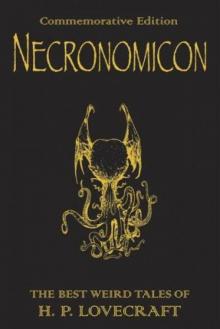 The Definitive H.P. Lovecraft: 67 Tales Of Horror In One Volume
The Definitive H.P. Lovecraft: 67 Tales Of Horror In One Volume The Complete Works of H.P. Lovecraft
The Complete Works of H.P. Lovecraft Other Gods and More Unearthly Tales
Other Gods and More Unearthly Tales Lovecraft's Fiction Volume I, 1905-1925
Lovecraft's Fiction Volume I, 1905-1925 The Shadow Out of Time
The Shadow Out of Time The Shunned House
The Shunned House Lovecraft's Fiction Volume II, 1926-1928
Lovecraft's Fiction Volume II, 1926-1928 The Thing on the Doorstep and Other Weird Stories
The Thing on the Doorstep and Other Weird Stories Dream Cycle of H. P. Lovecraft: Dreams of Terror and Death
Dream Cycle of H. P. Lovecraft: Dreams of Terror and Death Great Tales of Horror
Great Tales of Horror Shadows of Death
Shadows of Death Delphi Complete Works of H. P. Lovecraft (Illustrated)
Delphi Complete Works of H. P. Lovecraft (Illustrated) Waking Up Screaming: Haunting Tales of Terror
Waking Up Screaming: Haunting Tales of Terror H.P. Lovecraft Goes to the Movies
H.P. Lovecraft Goes to the Movies The Road to Madness
The Road to Madness The Complete H.P. Lovecraft Reader (68 Stories)
The Complete H.P. Lovecraft Reader (68 Stories) The Horror in the Museum
The Horror in the Museum Collected Fiction Volume 1 (1905-1925): A Variorum Edition
Collected Fiction Volume 1 (1905-1925): A Variorum Edition Lovecrafts_Fiction, vol.I_1905-1925
Lovecrafts_Fiction, vol.I_1905-1925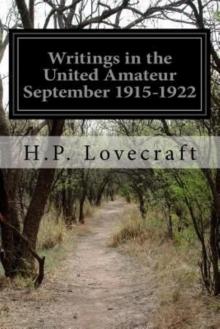 Writings in the United Amateur, 1915-1922
Writings in the United Amateur, 1915-1922 H.P. Lovecraft: The Complete Works
H.P. Lovecraft: The Complete Works Collected Fiction Volume 3 (1931-1936): A Variorum Edition
Collected Fiction Volume 3 (1931-1936): A Variorum Edition H.P. Lovecraft: The Complete Fiction
H.P. Lovecraft: The Complete Fiction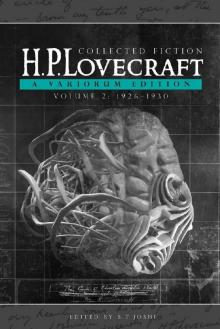 Collected Fiction Volume 2 (1926-1930): A Variorum Edition
Collected Fiction Volume 2 (1926-1930): A Variorum Edition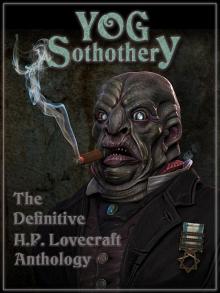 Yog Sothothery - The Definitive H.P. Lovecraft Anthology
Yog Sothothery - The Definitive H.P. Lovecraft Anthology The Complete H.P. Lovecraft Collection (Xist Classics)
The Complete H.P. Lovecraft Collection (Xist Classics)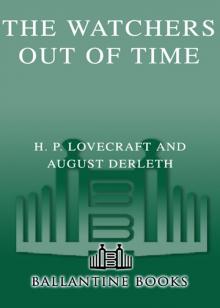 The Watchers Out of Time
The Watchers Out of Time Eldritch Tales
Eldritch Tales The Other Gods And More Unearthly Tales
The Other Gods And More Unearthly Tales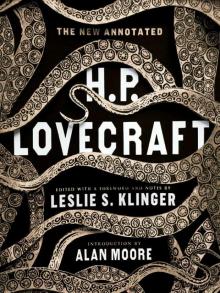 The New Annotated H. P. Lovecraft
The New Annotated H. P. Lovecraft At the mountains of madness
At the mountains of madness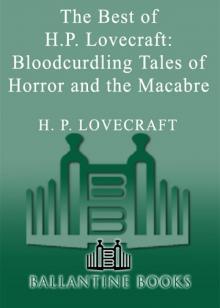 Bloodcurdling Tales of Horror and the Macabre
Bloodcurdling Tales of Horror and the Macabre Fossil Lake II: The Refossiling
Fossil Lake II: The Refossiling Shadows of Carcosa: Tales of Cosmic Horror by Lovecraft, Chambers, Machen, Poe, and Other Masters of the Weird
Shadows of Carcosa: Tales of Cosmic Horror by Lovecraft, Chambers, Machen, Poe, and Other Masters of the Weird H. P. Lovecraft
H. P. Lovecraft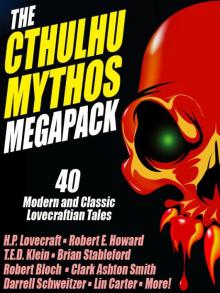 The Cthulhu Mythos Megapack
The Cthulhu Mythos Megapack The Complete H. P. Lovecraft Reader (2nd Edition)
The Complete H. P. Lovecraft Reader (2nd Edition) The Complete Fiction
The Complete Fiction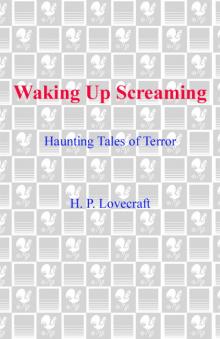 Waking Up Screaming
Waking Up Screaming Transition of H. P. Lovecraft
Transition of H. P. Lovecraft![[1935] The Shadow Out of Time Read online](http://i1.bookreadfree.com/i2/04/12/1935_the_shadow_out_of_time_preview.jpg) [1935] The Shadow Out of Time
[1935] The Shadow Out of Time The Horror Megapack
The Horror Megapack